The Pena Palace gets all the love in Sintra. But, for me, the Sintra National Palace is more interesting.
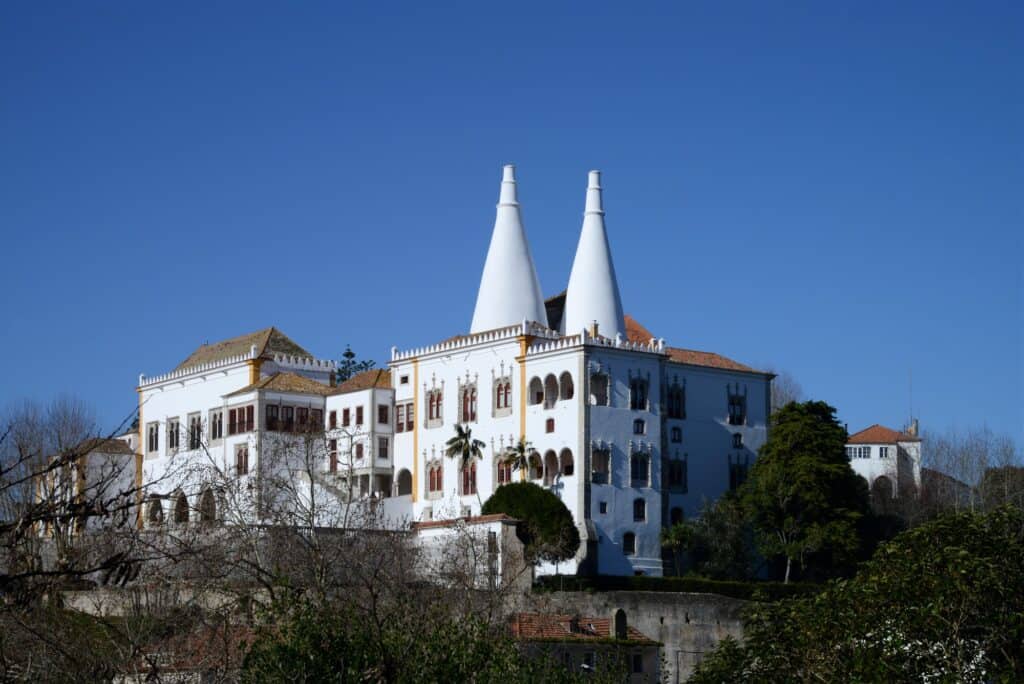
Sure, it doesn’t have have the fairytale design or romantic hilltop location that Pena boasts, But, the expansive rooms featuring azulejo tile work, decorated ceilings, and Islamic inspired design make the Sintra National Palace more historically relevant than it’s more popular cousin. The most striking element of the palace is the twin cone towers which were used as chimneys for the large kitchen.
Sintra National Palace origin story

The land where the Sintra National Palace now stands was originally a castle built by the Moors in the 10th or 11th century CE during the Umayyad conquest of Hispania. After the Christians pushed the Moors out of Sintra in the 12th century, the castle became the property of the Portuguese royal family.
As the royal family became obscenely wealthy during the so-called Age of Discoveries, the palace was expanded in the 15th and 16th centuries. Even though the palace was severely damaged by the 1755 earthquake that leveled Lisbon, it was rebuilt to look like it was before the disaster.
What to see at the Sintra National Palace
The rooms of the palace are filled with fascinating decorative design elements and artwork.
The Swan Room was the Great Hall in the palace and its centerpiece is a giant chandelier. But, the room’s namesake are the swan ceiling panels. Their painter and creation date is unknown, but they’re likely from the 14th century.
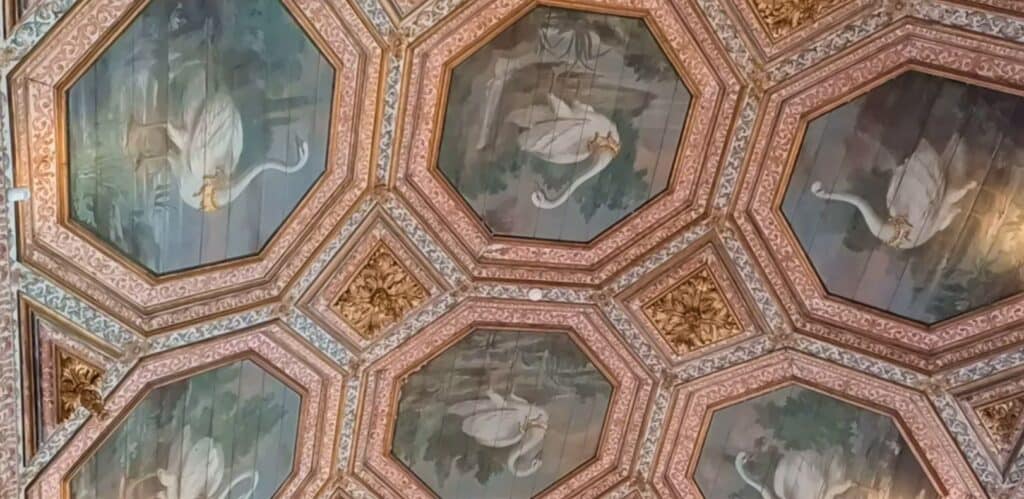
The Magpie Room was originally used to by the King and Queen to grant an audience with a head of state of a royal’s subject. Later the room hosted banquets. The magpie paintings adorning the ceiling are likely older than even the swan panels.
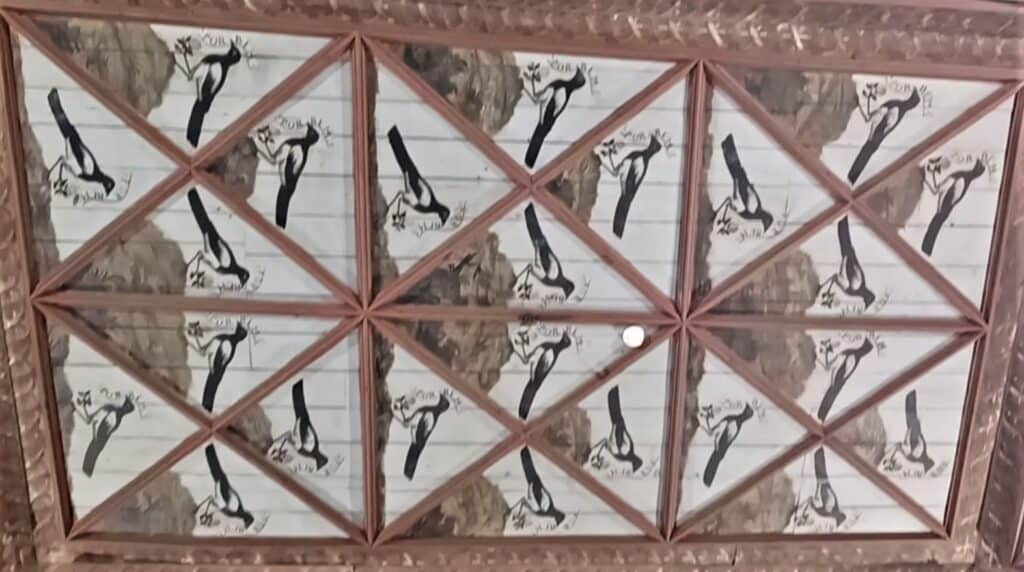
The Galley Room was built in the 16th century, like to connect the rooms of the northwest wing to the main palace. The 17th century ceiling paintings depict Portuguese, Dutch, and Ottoman boats and show the importance of Portugal’s sailing fleet.

The Wardrobe Room aka The Mermaid Room was used to keep clothes and jewelry, but it’s better known for the mermaids on the wall.
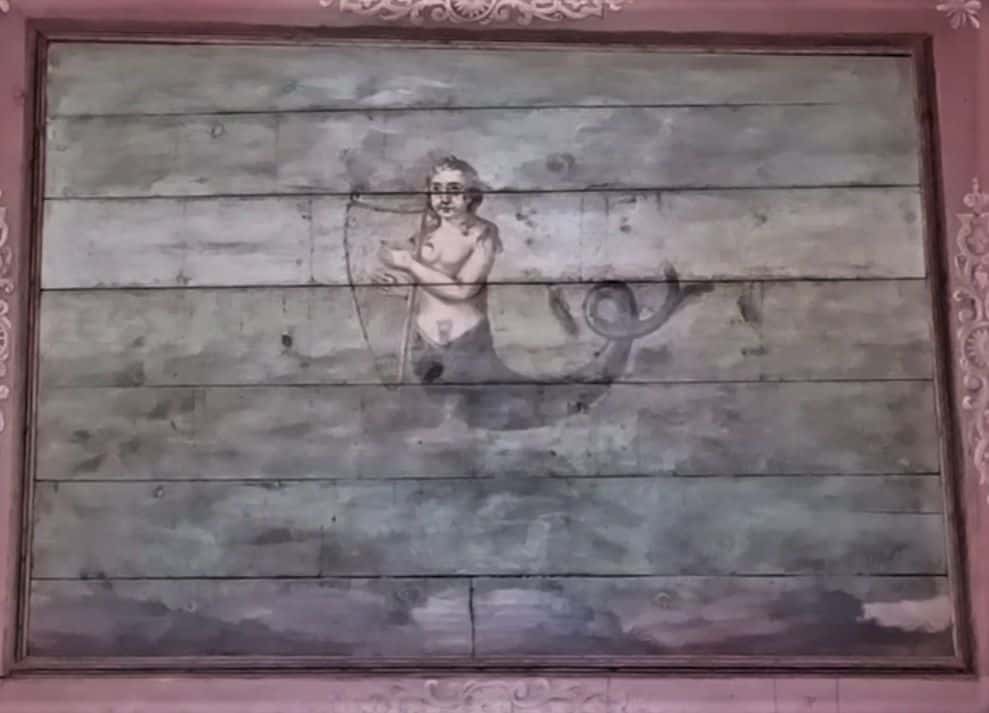
Room of the Coat of Arms has the coat of arms from the 72 most important families in Portugal under King Manuel I (1495-1521). Of course, King Manny has his coat of arms atop all the others at the highest point on the room’s ceiling. There is also some of the most impressive azulejo tilework in The Room of the Coat of Arms.
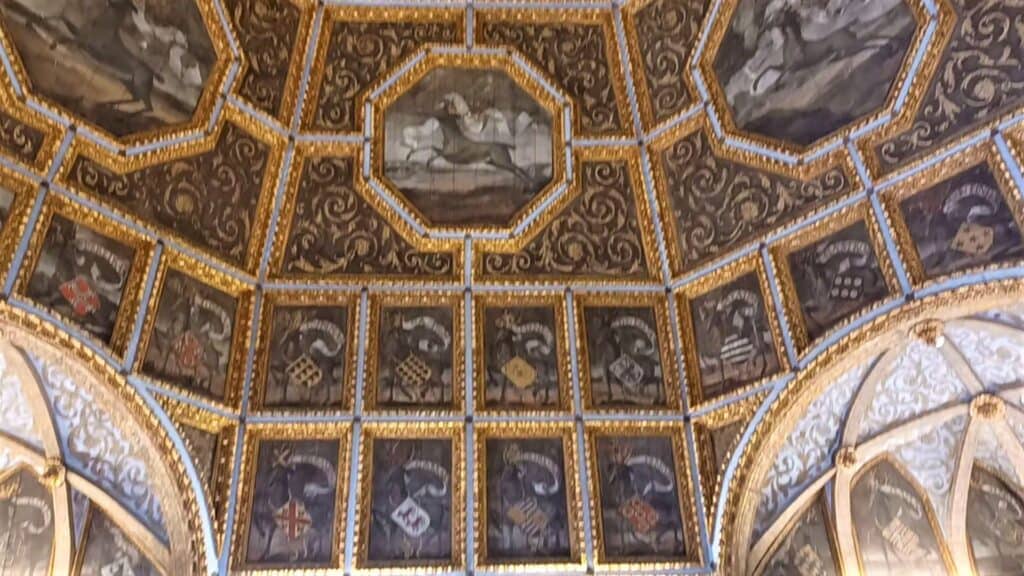
The Chamber of King Afonso VI is in the oldest part of the palace which was renovated in the 13th century and dates well before that. This room is at the heart of palace intrigue from the second half of the 17th century.
Portugal’s own Game of Thrones story
Alfonso was born in 1643 to King John IV and Queen Luisa de Guzman. At the age of three, young Alfonso was stricken with an illness that left him paralyzed on his left side and mentally unstable. But, when his father John died in 1656, 13 year old Alfonso was elevated to king. As he was a minor, his mother Luisa was named regent and was pretty much in charge of the kingdom.
Because of Alfonso’s disability, he was susceptible to outside influence and his confidant, the ambitious Luís de Vasconcelos e Sousa, 3rd Count of Castelo Melhor, began whispering in his ear that mama Luiza wanted to have Alfonso killed so she could become head of the kingdom. This, of course, was ridiculous since Luiza was already in charge of Portugal and probably would be for the rest of his life. And, if Alfonso died, the throne wouldn’t pass to Luisa, but instead to her next son, Pedro.
But, Alfonso believed his The Count of Castelo Melhor and had his mother exiled to the Azores and later a convent in Lisbon where she died.
That’s when things got much worse for Alfonso. He married the power hungry Maria Francisca of Savoy. Maria discovered that Alfonso’s childhood illness had left him impotent. So, she began an affair with Alfonso’s brother Pedro and had her marriage to Alfonso annulled.
Maria Francisca then began her own whisper campaign, convincing Peter that Alfonso was unfit to rule, which due to his mental state, was probably true. Pedro consolidated his power and was able to effectively overthrow his brother and exile him to the Azores (karma, much?). Alfonso was still king, but it was in name only as Pedro controlled the government.
Later, when Alfonzo’s health grew even worse, he was permitted to return to Sintra but was kept in what is now called The Chamber of Alfonso VI under constant guard by 300 soldiers until he died nine years later.
In the final twist, when Alfonso died, Pedro was elevated to king, but Maria Francisca died 3 months later.
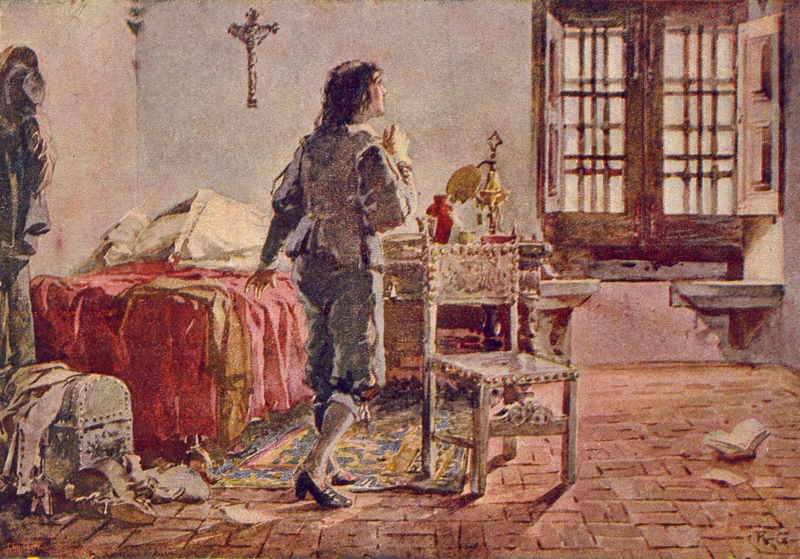
The Courtyard and Gardens of The Sintra National Palace are not expansive but are interesting for their Mudejar design, showing the Muslim influence in Sintra and Portugal as a whole.

Getting to the Sintra National Palace
Whatever you do, don’t drive to Sintra. Traffic is bad and parking in nearly impossible.
The train from Lisbon gets you to Sintra in less than an hour.
The Sintra National Palace is the historic city center so it’s an easy and scenic walk from the train station.
About the Author

Brent Petersen is the Editor-in-Chief of Destination Eat Drink. He currently resides in Setubal, Portugal. Brent has written the novel “Truffle Hunt” (Eckhartz Press) and the short story collection “That Bird.” He’s also written dozens of foodie travel guides to cities around the world on Destination Eat Drink, including in-depth eating and drinking guides to Lisbon, Porto, Sintra, Monsaraz, and Evora in Portugal. Brent’s podcast, also called Destination Eat Drink, is available on all podcast platforms.
